My Town: Monroe

Monroe’s town green. photo: Ian Lowell
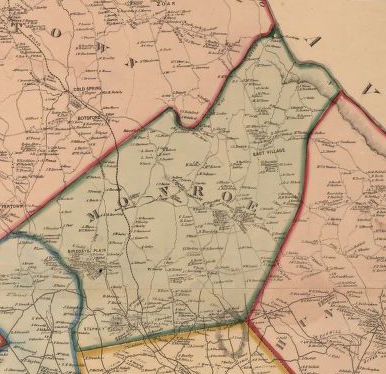 Where is my town?
Where is my town?
Monroe is in southwestern Connecticut. It is bordered by five towns. Shelton is to the southeast. Trumbull is to the south. Easton is to the west, and Newtown is to the north. Oxford is to the northeast. The Housatonic River is the border between Monroe and Oxford.
The Housatonic River was dammed in 1919 to make electricity. Stevenson Dam created Lake Zoar. The lake is popular for boating. A bridge goes over the dam. It connects Oxford to Monroe.
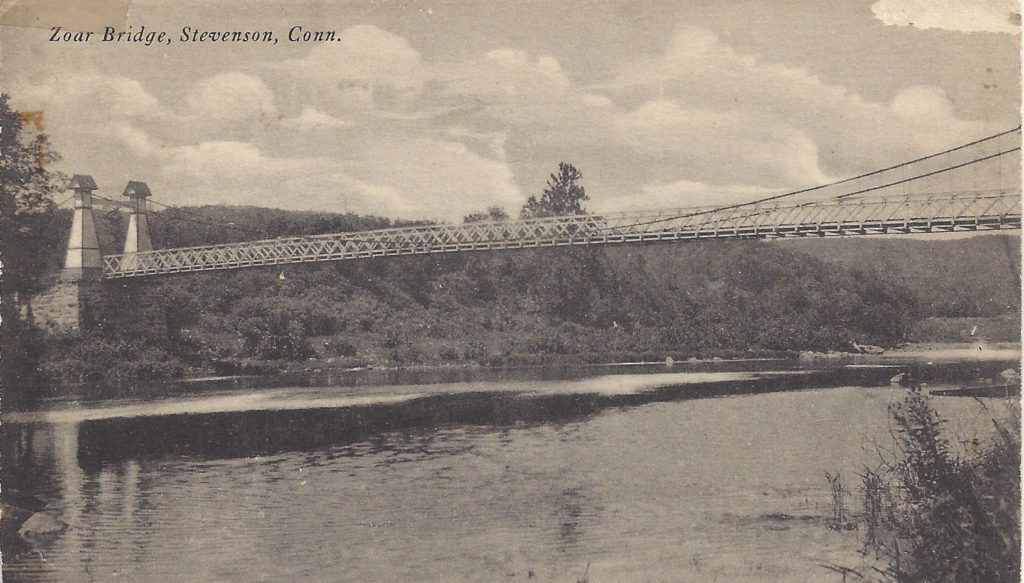
Postcard of the suspension bridge over the Housatonic River before Stevenson Dam was built. Monroe Historical Society
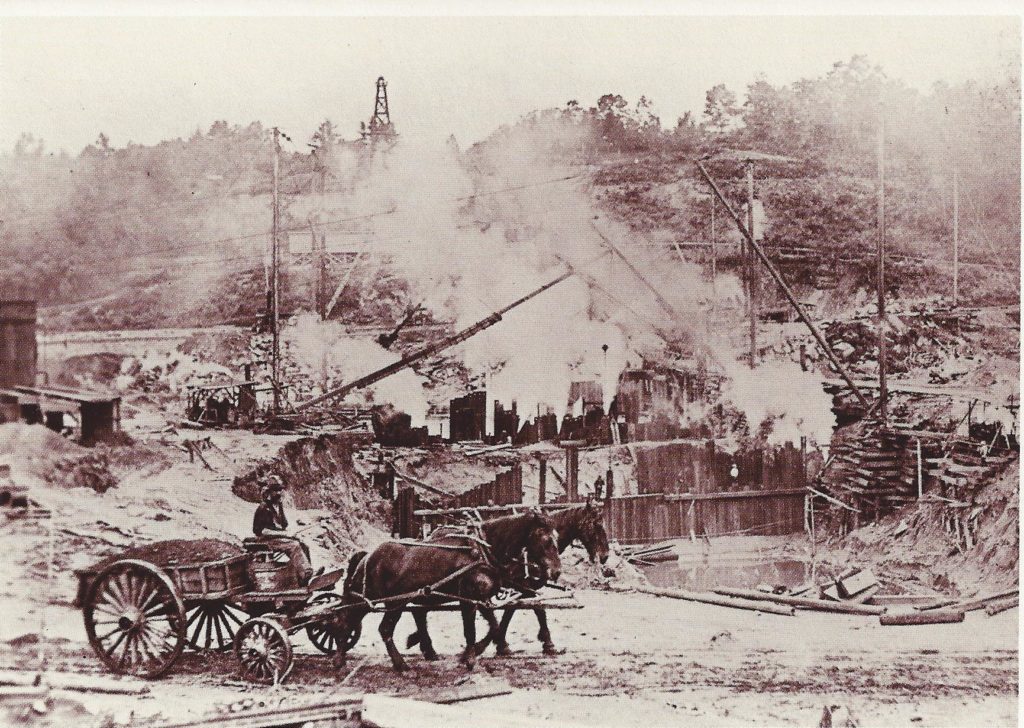
Construction of Stevenson Dam, c. 1917. The dam is part of a hydroelectric power plant. Monroe Historical Society
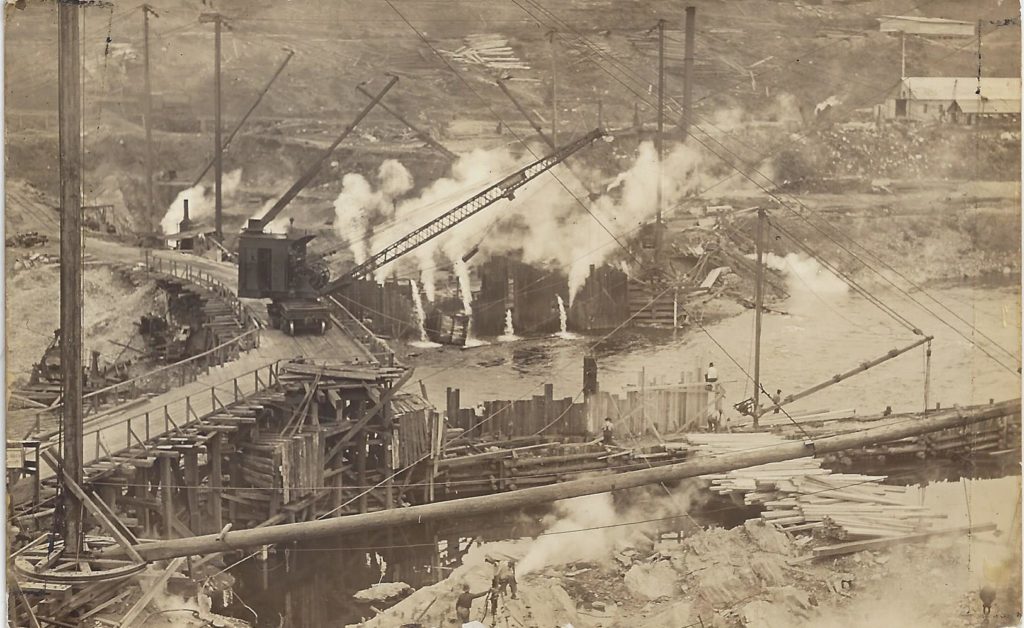
Construction of Stevenson Dam, c. 1917. The dam is part of a hydroelectric power plant. Monroe Historical Society
The town center has a large green. The library, town hall, and two churches surround the green. Monroe has a second, smaller green. It is in the village of Stepney. Stepney is in the southwest corner of town. It developed when the Housatonic Railroad made a depot there. Monroe has other smaller villages within its town borders.
How was it founded?
The Paugusset, Pootatuck, and Wepawaugs lived here. They lived along the banks of the Housatonic River. They moved between this area and the shores of Long Island Sound.
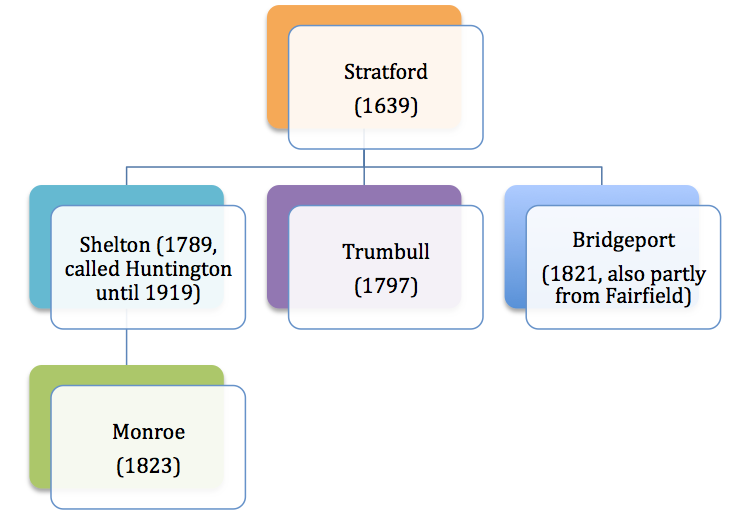 English settlers from Stratford purchased the land from the Paugussets between 1662 and 1671. It became part of Stratford. It became the Parish of New Stratford in 1762. Monroe became a separate town in 1823. It was named for President James Monroe. He was the president of the United States from 1817 to 1825.
English settlers from Stratford purchased the land from the Paugussets between 1662 and 1671. It became part of Stratford. It became the Parish of New Stratford in 1762. Monroe became a separate town in 1823. It was named for President James Monroe. He was the president of the United States from 1817 to 1825.
How did it grow?
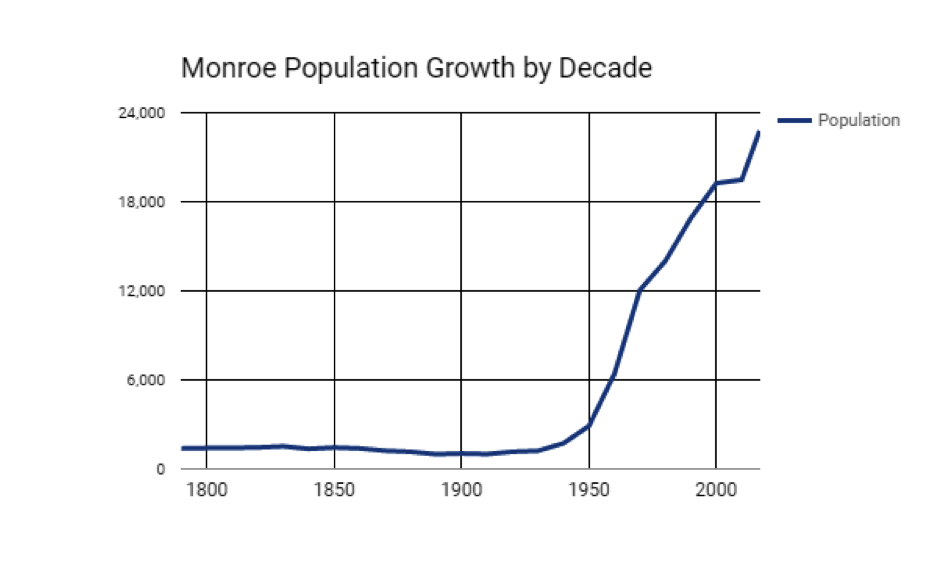
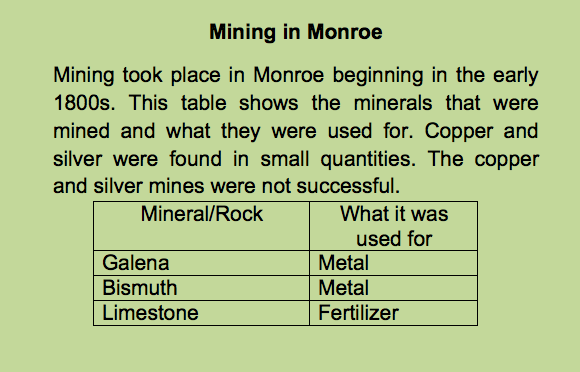 Monroe was a small rural town. It was a farming community with a few small industries. It had sawmills, blacksmith shops, and shoemakers. It had carriage factories, stirrup makers for horse saddles, and mining.
Monroe was a small rural town. It was a farming community with a few small industries. It had sawmills, blacksmith shops, and shoemakers. It had carriage factories, stirrup makers for horse saddles, and mining.
During the Revolutionary War, the French army camped here. The troops were on their way from Rhode Island to meet General Washington in Virginia.
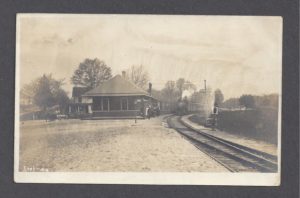
Postcard of Stepney train depot, Monroe. Monroe Historical Society
The Housatonic Railroad arrived in 1840. It connected Monroe to Bridgeport. The railroad helped the town grow.
Children attended one of seven one-room schoolhouses. In 1935, the Monroe Centre School was built. A high school was built in 1957. It was named for Semyon Masuk who donated the land for the school.
Find out more about one of Monroe’s one-room school houses HERE.
How do its residents make a living?
By the 1950s, Monroe had shops, restaurants, and a small airport. Today, more than 20,000 people live in Monroe. People work in service industries, professional jobs, and manufacturing.
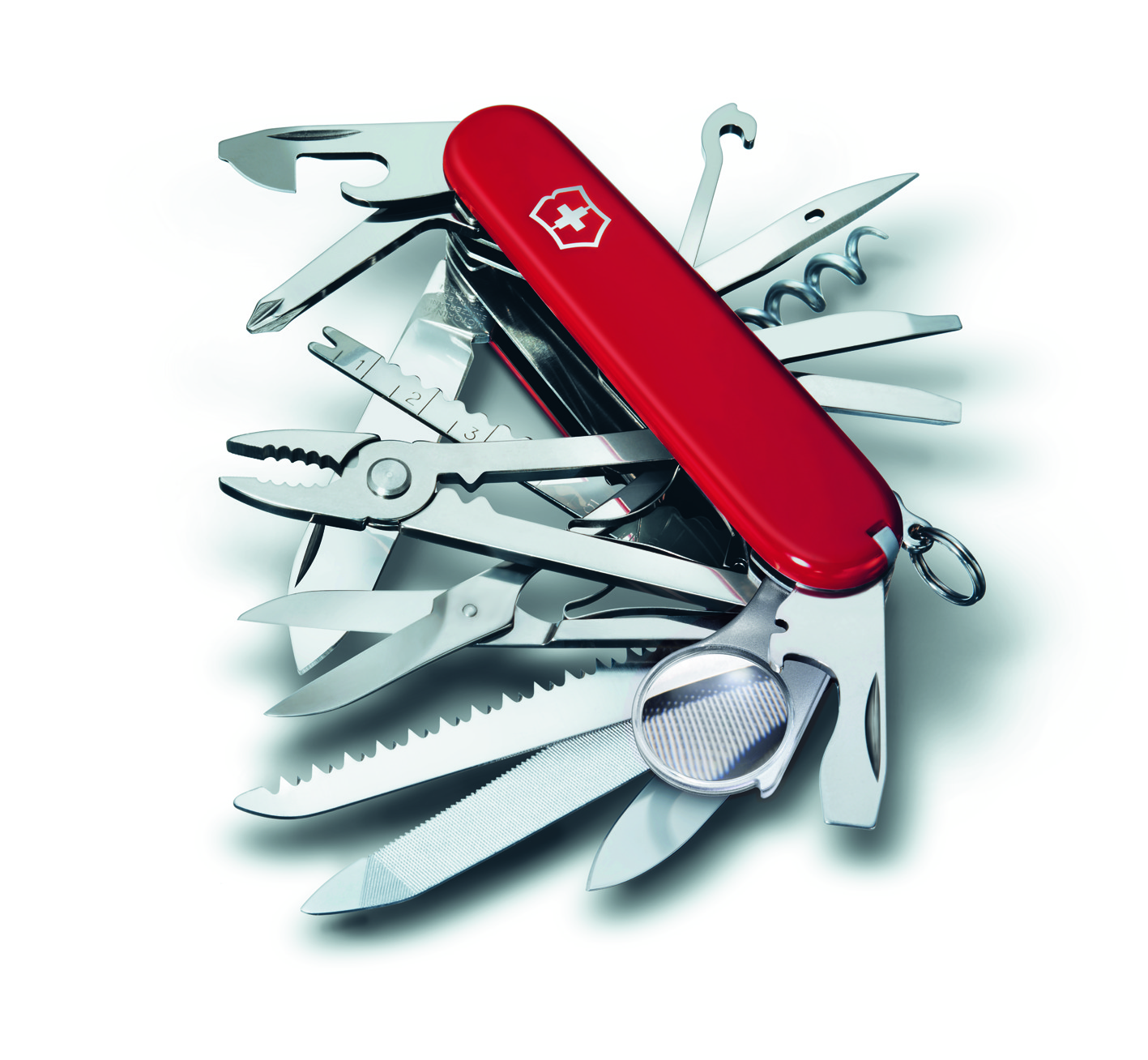
Victorinox’s signature Swiss Army knife
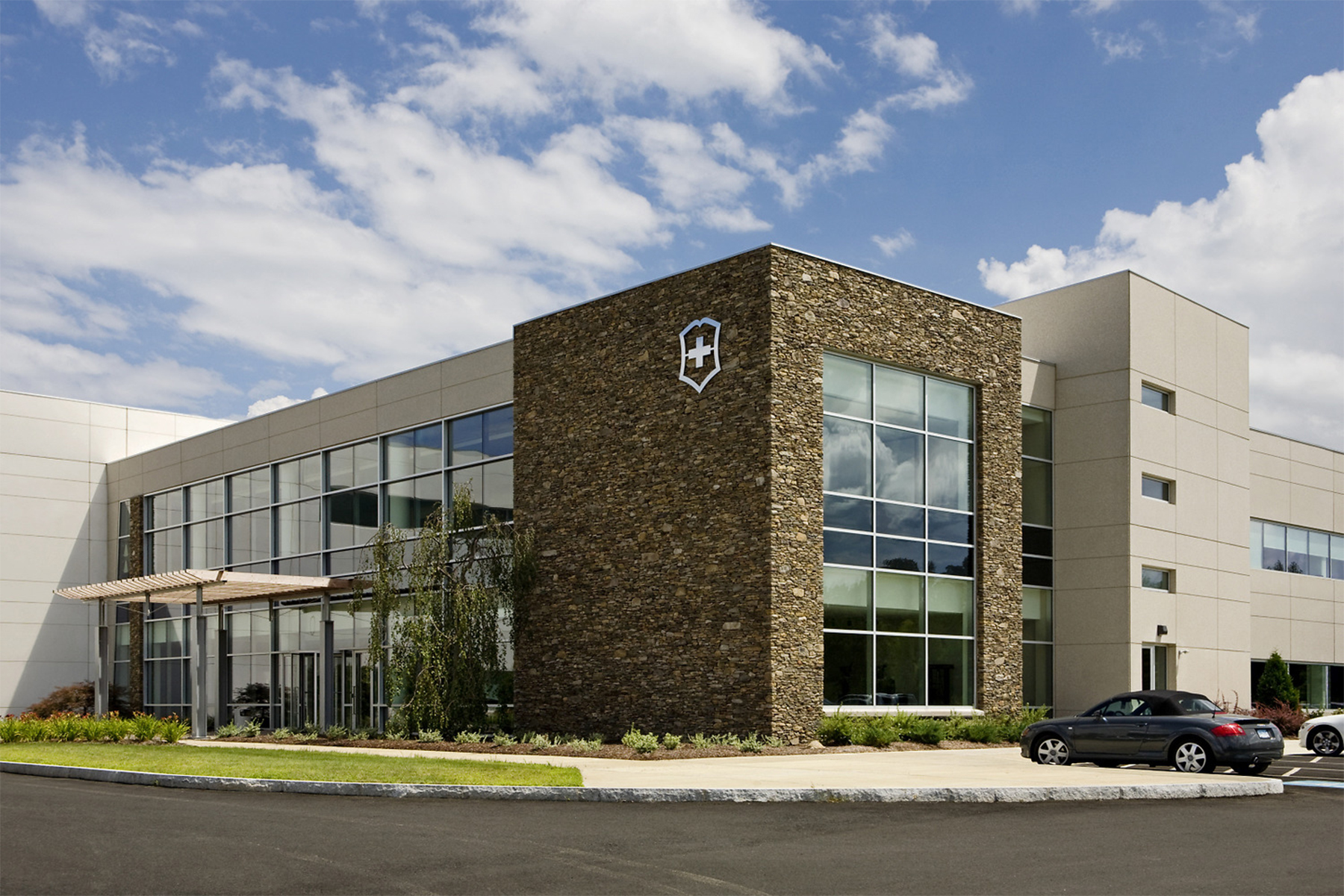
Victorinox Swiss Army North American Headquarters, Monroe, Connecticut
H2O First Light Power Company operates the power plant at the Stevenson Dam. The North American headquarters of Victorinox Swiss Army is in Monroe. Victorinox is a Swiss company. It is known across the world for the watches, knives, travel gear, and fragrances it makes.
Monroe has many small businesses. Sippin Energy delivers heating oil. Benedict’s Home and Garden sells farm and garden supplies.
Who are its notable people?
Sisters Fannie Burr (1858 – 1931) and Jennie Burr (1872 – 1961) were artists and writers. They attended Yale Art School. They became famous for their drawings and paintings of townspeople, landscapes, and farm life.
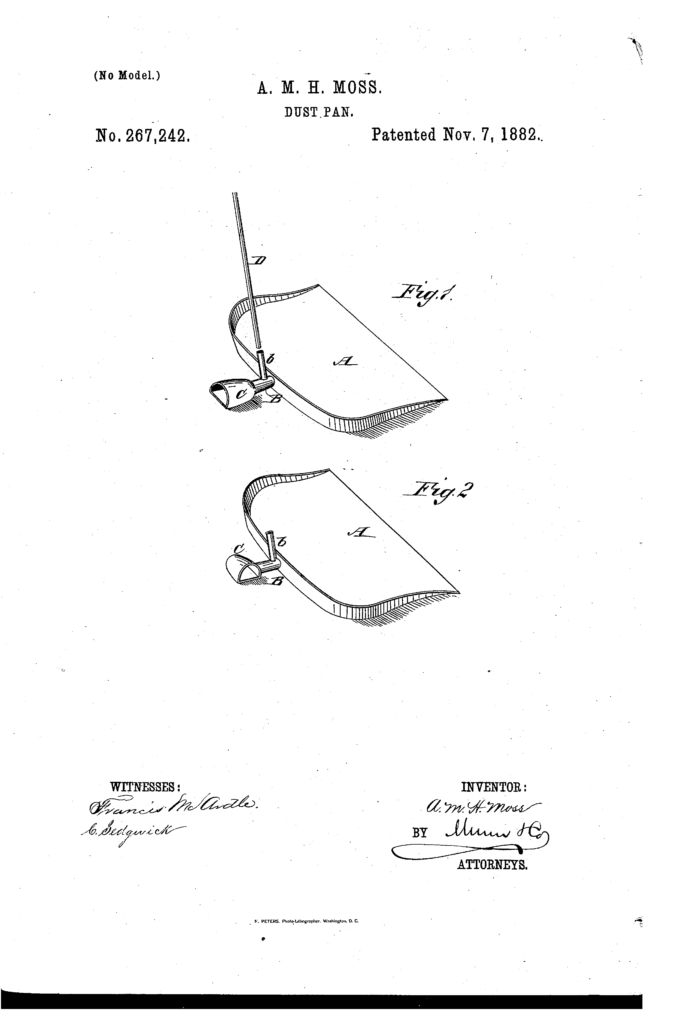 Annie Moss invented a dustpan in 1882 that could attach to the toe of a shoe for easy sweeping. See her patent HERE.
Annie Moss invented a dustpan in 1882 that could attach to the toe of a shoe for easy sweeping. See her patent HERE.
David Merrill (1935 – ) is an artist. He grew up in Monroe. He is known for his paintings of New England life. You can see a mural he painted in the town library. He has won awards across New England.
Michael Gminski (1959 – ) was a basketball star. He played for Duke University. He played in the NBA for 13 years. He played for the New Jersey Nets, Philadelphia 76ers, Charlotte Hornets, and Milwaukee Bucks.
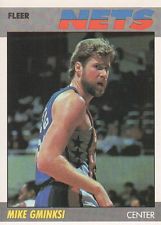
Mike Gminski. Monroe Historical Society
For more information on our town, or to plan a field trip to visit please contact:
Monroe Historical Society, Webb Mountain Discovery Zone, or Ian Lowell, Monroe Public Schools, 203-452-5823 ext.7153
“My Town: Monroe” was written by Ian Lowell, Monroe Public Schools



 Where is my town?
Where is my town?


 English settlers from Stratford purchased the land from the Paugussets between 1662 and 1671. It became part of Stratford. It became the Parish of New Stratford in 1762. Monroe became a separate town in 1823. It was named for President James Monroe. He was the president of the United States from 1817 to 1825.
English settlers from Stratford purchased the land from the Paugussets between 1662 and 1671. It became part of Stratford. It became the Parish of New Stratford in 1762. Monroe became a separate town in 1823. It was named for President James Monroe. He was the president of the United States from 1817 to 1825.
 Monroe was a small rural town. It was a farming community with a few small industries. It had sawmills, blacksmith shops, and shoemakers. It had carriage factories, stirrup makers for horse saddles, and mining.
Monroe was a small rural town. It was a farming community with a few small industries. It had sawmills, blacksmith shops, and shoemakers. It had carriage factories, stirrup makers for horse saddles, and mining.


 Annie Moss invented a dustpan in 1882 that could attach to the toe of a shoe for easy sweeping. See her patent HERE.
Annie Moss invented a dustpan in 1882 that could attach to the toe of a shoe for easy sweeping. See her patent HERE.